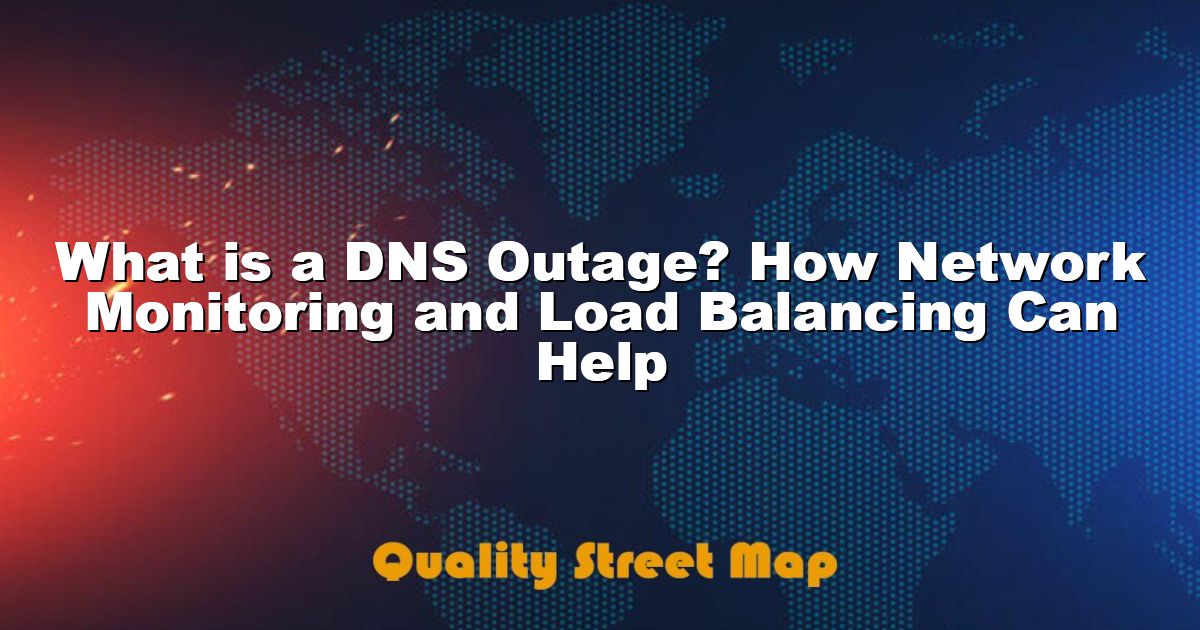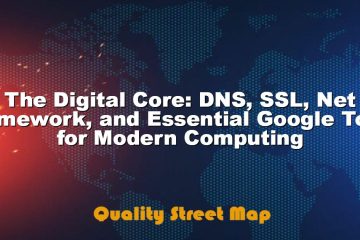What is a DNS Outage? How Network Monitoring and Load Balancing Can Help

Understanding DNS Outage Causes And Impacts
A Domain Name System (DNS) outage can be a critical issue for organizations that rely heavily on continuous online presence. Often overlooked, What is a DNS outage, and how does it disrupt network functionality? A DNS outage occurs when the system responsible for translating domain names into IP addresses is unavailable, leading to failed online communications. It’s essential to comprehend the various factors that can trigger such occurrences to mitigate their impacts effectively.
Common Causes Of DNS Outages
- Server misconfigurations that lead to system failures
- Hardware failures affecting DNS infrastructure
- Cyberattacks targeting DNS vulnerabilities
- Excessive traffic or distributed denial-of-service (DDoS) attacks
- Software bugs within DNS services
- Power outages impacting data centers
- ISP issues leading to connectivity breakdowns
“A single DNS outage can cascade into widespread service disruptions.” Understanding the causes is only a part of the solution. The ramifications of such outages can be profound, affecting both user experience and business operations. It’s advisable for companies to invest in robust network monitoring and load balancing solutions to minimize the impact of disruptions and maintain service continuity. Such proactive measures can significantly diminish the potential downtime and alleviate the pressure on IT staff during incidents.
Impact On Website Performance
During a DNS outage, one of the most immediate impacts is on website performance. Customers attempting to access your site might encounter slow load times or even completely inaccessible pages. This interruption can drive users away, lowering customer satisfaction and damaging your online reputation. Website performance is crucial as it directly influences user engagement and conversion rates. To mitigate these effects, companies should use efficient load balancing to distribute traffic among multiple servers, ensuring accessibility even during a DNS incident.
Business Consequences
The business consequences of a DNS outage extend beyond technical issues. Companies may suffer from loss of revenue, especially if they rely on e-commerce. For some businesses, every minute of downtime can translate into significant financial losses. Additionally, reputational damage may occur, affecting brand trust and customer loyalty. Employees’ productivity can also be hindered due to disrupted internal systems. Implementing comprehensive network monitoring can help identify and address problems promptly, limiting the business repercussions of a DNS outage. Ensuring your DNS setup is resilient protects against unexpected operational disruptions and supports long-term business continuity.
What Is Network Monitoring? Key Techniques Explained
In today’s digital age, understanding what is network monitoring is crucial for maintaining system integrity and performance. Network monitoring involves the continuous oversight and management of a computer network using specialized tools. It ensures that all network components—including routers, switches, firewalls, and servers—are functioning optimally. This monitoring is essential for identifying potential disruptions, such as DNS outages, and ensures prompt responses to minimize downtime, thereby protecting the organization’s operations and reputation.
Steps To Implement Network Monitoring
- Identify Network Components: Start by cataloging all vital network devices and software.
- Select the Right Tools: Choose network monitoring tools that align with your organization’s needs.
- Define Network Policies: Establish clear monitoring policies and protocols for data collection.
- Set Up Monitoring Parameters: Configure alerts and thresholds for different network variables.
- Implement Real-Time Monitoring: Ensure continuous observation of network performance.
- Review and Analyze Data: Regularly assess the collected data to enhance network security.
- Refine Monitoring Strategies: Continuously improve techniques based on new findings and technologies.
Effective network monitoring goes beyond just detecting issues; it includes anticipating potential threats through predictive analytics. By implementing the right strategies and technologies, businesses can secure their networks from unexpected disturbances. Network monitoring not only aids in diagnosing problems but also facilitates proactive management of network health, reducing the risk of major disruptions and optimizing performance. Its strategic application is a vital component for modern IT infrastructures.
Real-Time Monitoring
Real-time monitoring is an integral aspect of network management, providing instant insights into the network’s status. This method enables administrators to detect failures and performance bottlenecks as they occur. High-speed data processing and advanced analytics empower businesses to respond swiftly to anomalies. By ensuring that network data is accessed and analyzed continuously, businesses can maintain optimal operational efficiency while averting potential problems before they escalate.
Automated Alerts
Automated alerts play a critical role in network monitoring by notifying administrators of issues in real time. These alerts are configured based on preset thresholds, ensuring that any deviation from normal network behavior triggers an immediate response. With automated alerts, IT teams can quickly identify and address network problems before they impact users. This proactive approach minimizes downtime and helps maintain the network’s reliability. As one expert stated, Automated alerts are the safety net that ensures network stability even amidst unexpected anomalies.
Data Analysis
Data analysis is the backbone of effective network monitoring, allowing organizations to derive meaningful insights from collected data. By analyzing trends and patterns within network activity, IT teams can predict potential issues and make informed decisions to improve network performance. Analyzing data not only aids in troubleshooting but also facilitates better resource planning and network design. Understanding what is critical to the network through data analysis enables businesses to stay ahead in the rapidly evolving digital landscape.
Load Balancing: Mitigating DNS Outages Effectively
When a DNS outage occurs, it disrupts the critical infrastructure that maps domain names to IP addresses, resulting in the unavailability of websites and online services. To effectively mitigate these outages, implementing load balancing can be an indispensable strategy. Load balancers help distribute incoming traffic across multiple servers, ensuring that no single server is overwhelmed, thus maintaining high availability and reliability. In essence, load balancing provides a fundamental safeguard against the detrimental effects of DNS outages.
Exploring the Benefits Of Load Balancing reveals a host of advantages that can effectively counteract DNS outage repercussions:
- Enhanced redundancy and failover capabilities
- Optimized resource utilization across servers
- Improved response times and service reliability
- Seamless maintenance without downtime
- Increased security by masking backend servers
- Scalability to handle growing user demand
Implementing load balancers is crucial in safeguarding digital platforms from the threats posed by DNS outages. These systems can intelligently direct traffic based on server health and capacity, ensuring that users have uninterrupted access to services. This not only boosts operational efficiency but also enhances user experience by guaranteeing consistent performance levels.
Implementing Load Balancers
To implement load balancers effectively, organizations should consider both hardware and software solutions, each catering to different needs. Hardware load balancers are specialized devices that manage traffic at a high capacity, ideal for large enterprises. In contrast, software-based solutions offer flexibility and cost-effectiveness, making them suitable for smaller operations or cloud-based applications. The choice of solution must align with organizational size, traffic demands, and budget constraints for optimal performance and cost management.















